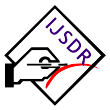Imp Links for Author
Imp Links for Reviewer
Research Area
Subscribe IJSDR
Visitor Counter
Copyright Infringement Claims
Indexing Partner
|
Published Paper Details
|
|
| Paper Title: | An End-To-End Dehazing Method Using Deep Learning |
| Authors Name: | Shyamala C , Sneha K , Gayana B.E , Nisha M , Suma M.R |
| Unique Id: | IJSDR2007003 |
| Published In: | Volume 5 Issue 7, July-2020 |
| Abstract: | The appearance of ambient haze impairs the image grade produced by camera sensors. The elimination of haze is called dehazing, which is usually done by the physical deterioration model, which involves a process to an unplaced inverse issue. Recently, the dark channel prior(DCP) was introduced to alleviate the complexity of the inverse problem and has gained much caution. The DCP obtained from the characteristic of natural outside pictures, that the intensity value inside a local window of at least one color channel is close to zero. The dehazing can be achieved through four major steps based on the DCP: (1) estimation of ambient light, (2) estimation of transmission map, (3) refinement of transmission map and (4) restoration of images. This four step dehazing method allows a progressive approach to technical solution of the unplaced problem to be presented. It also helps us by providing some clarity about the progressive contributions of recent DCP-related work for each phase of the dehazing method. Our comprehensive survey and experimental study on DCP-based methods will help readers understand the efficacy of each phase of the dehazing process and will encourage the development of advanced dehazing algorithms. Before doing the dehazing, we classify our images first as haze based on percentage. Once the image is dehazed, we test it by running algorithms for text detection and object detection. |
| Keywords: | Single image dehazing, dark channel prior, convolutional neural network, atmospheric light intensity, transmission estimation. |
| Cite Article: | "An End-To-End Dehazing Method Using Deep Learning", International Journal of Science & Engineering Development Research (www.ijsdr.org), ISSN:2455-2631, Vol.5, Issue 7, page no.16 - 20, July-2020, Available :http://www.ijsdr.org/papers/IJSDR2007003.pdf |
| Downloads: | 000337067 |
| Publication Details: | Published Paper ID: IJSDR2007003 Registration ID:192004 Published In: Volume 5 Issue 7, July-2020 DOI (Digital Object Identifier): Page No: 16 - 20 Publisher: IJSDR | www.ijsdr.org ISSN Number: 2455-2631 |
|
Click Here to Download This Article |
|
| Article Preview | |
|
|
|
Major Indexing from www.ijsdr.org
| Google Scholar | ResearcherID Thomson Reuters | Mendeley : reference manager | Academia.edu |
| arXiv.org : cornell university library | Research Gate | CiteSeerX | DOAJ : Directory of Open Access Journals |
| DRJI | Index Copernicus International | Scribd | DocStoc |
Track Paper
Important Links
Conference Proposal
ISSN
 |
 |
DOI (A digital object identifier)
  Providing A digital object identifier by DOI How to GET DOI and Hard Copy Related |
Open Access License Policy
Social Media
Indexing Partner |
|||
| Copyright © 2024 - All Rights Reserved - IJSDR | |||






Facebook Twitter Instagram LinkedIn